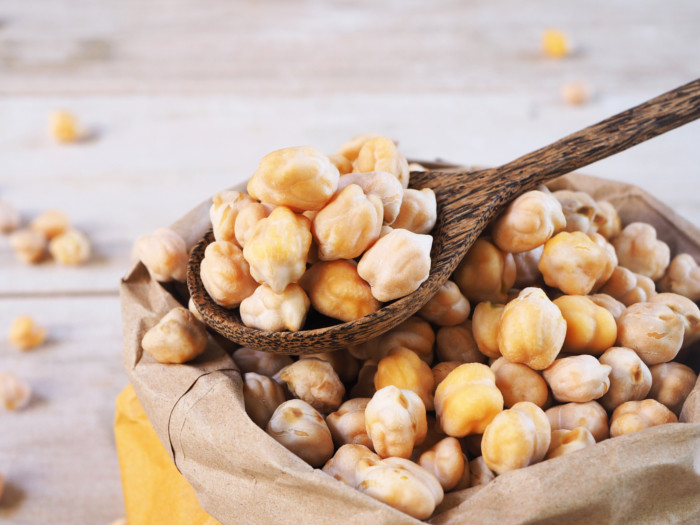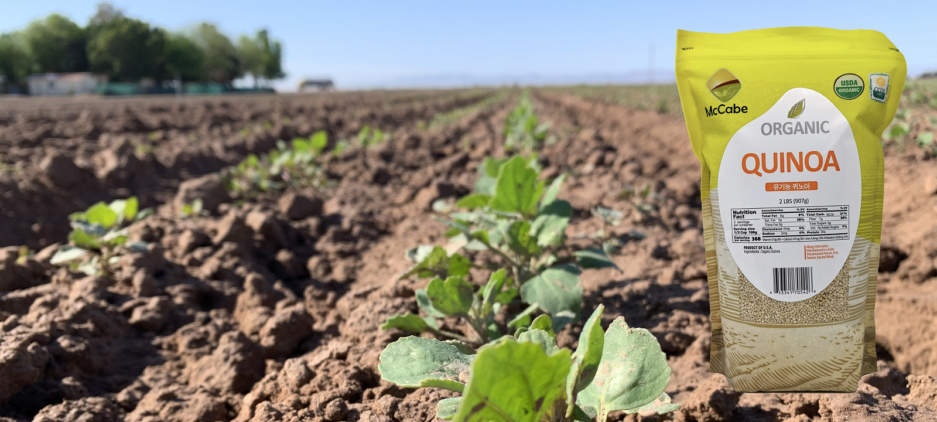Chickpeas or garbanzo beans are an excellent source of plant-based protein which helps prevent diabetes and aid in weight loss. The amazing benefits of chickpeas include the ability to improve digestion, prevent heart diseases, stabilize blood pressure levels, and lower the risk of genetic diseases and cancer. They also boost bone, skin, and hair health.
What are Chickpeas (Garbanzo Beans)?
Chickpea or garbanzo bean is a famous legume also known as Ceci bean, Bengal gram or Egyptian pea, depending on where you’re eating them. These small, pale-brown beans have been cultivated for the better part of 7,000 years, making them the oldest and most popular legumes on the planet. [1]
Types of chickpeas: There are roughly 90 identified species of chickpea. Although the most common variants are pale-brown, black, green, and red chickpeas.
Chickpeas Nutrition Facts
Chickpeas or garbanzo beans are a powerhouse of nutrients, packed with plant-based protein, dietary fiber, and carbohydrates. [2] They are a rich source of antioxidants and minerals such as iron, zinc, magnesium, folate, and phosphorous. The nutty seeds also have a number of essential vitamins like thiamin, riboflavin, niacin, vitamin C, A, B6, B12, and vitamin K.

Health Benefits of Chickpeas
Let’s look at some of the health benefits of chickpeas:
Prevent Diabetes
Chickpeas have a high amount of soluble fiber which helps regulate blood sugar levels by optimizing digestion. [3] They can prevent the development of diabetes by ensuring normal levels of insulin and blood sugar and help people manage the condition.
Weight Loss
Garbanzo beans with their high density of nutrients, combined with the dietary fiber, are perfect for people trying to lose weight. [4] The fiber helps the body feel full for longer, by interacting with ghrelin, the hunger hormone, and inhibiting its release to some degree. The blend of nutrients and minerals also keeps the body energized and active, preventing fatigue and snacking between-meal. This makes chickpeas great for reducing overall caloric intake, because you simply don’t feel hungry, despite the 270 calories per cup of chickpeas.
Improve Digestion
The high levels of dietary fiber found in chickpeas can help to bulk up your stool. [5] This keeps your bowel movements regular while eliminating inflammation, cramping, bloating, and constipation. This can also improve absorption of nutrient digestion and ensure that you’re making the most of the nutritional value of your food.
Boost Heart Health
Our cardiovascular health gets a boost in two different ways from garbanzo beans. First, the high levels of soluble fiber help to balance cholesterol levels and aid in preventing atherosclerosis, heart attacks, and strokes. [6] Second, this legume can also reduce the amounts of LDL (bad) cholesterol in the blood. [7]Furthermore, the only fats that are found in garbanzo beans are omega-3 fatty acids, which are the beneficial polyunsaturated fats that help protect the heart and reduce inflammation throughout the body.
Good Source of Protein
Chickpeas are an important source of the proteins needed for growth and development, as well as proper healing and repair throughout the body. They are an ideal option for vegetarians who want to ensure they have the proper nutrient intake. However, one should not rely on chickpeas as a sole source of proteins. [8] A balanced protein intake is advised.
Rich Source of Antioxidants
The antioxidant compounds found in chickpeas include polyphenols, phytonutrients, beta-carotene, and key vitamins. These reduce oxidative stress in the body and prevent chronic diseases. Antioxidants seek out free radicals, the dangerous byproducts of cellular metabolism, which can cause healthy cells to mutate. [9] These antioxidants can help protect the body from cancer, coronary heart diseases, macular degeneration, and even cognitive disorders such as Alzheimer’s and Parkinson’s disease.
Strengthen Bones
Garbanzo beans being rich in iron, phosphorus, magnesium, copper, and zinc are exceptionally good for bone health. [10] Many of those minerals are essential to improve bone mineral density and prevent age-related conditions like osteoporosis.
Prevent Genetic Defects
Folate is an important B-vitamin for many different reasons, especially for women. [11] Low folate levels are closely associated with neural tube defects and other complications with the birth of children. Adding folate-rich chickpeas in the diet during pregnancy is a delicious way to ensure baby’s healthy delivery.
Maintain Blood Pressure
One of the key ways to maintain low blood pressure is to go for a low-sodium (low-salt) diet. Garbanzo beans being naturally low in sodium help in lowering high blood pressure. [12]
Lower Inflammation
Choline in chickpeas is a macronutrient that plays a vital role in the body’s ability to fight chronic inflammation. [13] It also regulates your sleep cycle, increases the range of movement in the muscles, as well as boosts learning and memory.
Prevent Hair Loss
Owing to their high protein and iron content, chickpeas can act as a wonderful natural supplement for those experiencing hair loss. These beans are also rich in vitamin A, B, and E, along with omega 6 fatty acids, all of which improve scalp health and boost blood circulation. [14]
Boost Eye Health
Intake of chickpeas on a regular basis can boost your eyesight. They are a good source of zinc and vitamins such as vitamin A, C, and E, all of which help protect vision.
Skin Care
The presence of manganese in chickpeas enhances skin health and keeps the formation of wrinkles and fine lines at bay. Essentially, manganese prevents wrinkles by reversing the damaging effect of free radicals. This legume also contains the element molybdenum, which eliminates sulfites, providing a detox effect on the skin. Other vital nutrients like folate, zinc, and vitamins repair UV damage and toxin overload while keeping the skin supple and glowing.
Balance Hormones
Consuming garbanzo beans can be a safe and natural way to counter menopausal and postmenopausal symptoms like night sweats, mood swings, and hot flashes. Chickpeas contain plant hormones known as phytoestrogens, which mimic the body’s natural female hormone estrogen. They also guard against diseases that commonly affect women such as breast cancer and osteoporosis.
Other Uses
- For dandruff, make a paste with chickpea flour and some water. Massage this on your scalp and leave it for half an hour before washing off.
- Chickpea flour is also good for oily, spotty skin. Simply combine some flour with milk and rose water to make a face mask.
How to Cook Chickpeas?
Chickpeas are available easily throughout the year in dried or canned form. The canned version contains salt and preservatives but offers convenience. Here’s how you cook dried chickpeas:
- Washing and soaking: Wash and soak chickpeas in water for 8 to 10 hours. Soaking the legumes not only brings down cooking time but also removes some of the harmful compounds and oligosaccharides that can cause problems in the gastrointestinal tract.
- Cooking: The best way to cook soaked chickpeas is to simmer them for a couple of hours until tender.
Quick Serving Tips
Some quick ways of adding garbanzo beans to your diet include:
- Chickpea is used as the main ingredient in hummus. [15]
- Chickpea sprouts or steamed chickpeas can be added to any salad. They can be used to prepare soups, salads, dips, and dishes.
- Chickpeas are ground to make chickpea flour, also known as Bengal gram flour. It can be used as a substitute for wheat flour as a vegan and gluten-free flour, or in combination with others to enhance taste and nutrition.
- Flatbread can be made with equal quantities of chickpea and barley flour. This is a beneficial recipe for diabetics.
